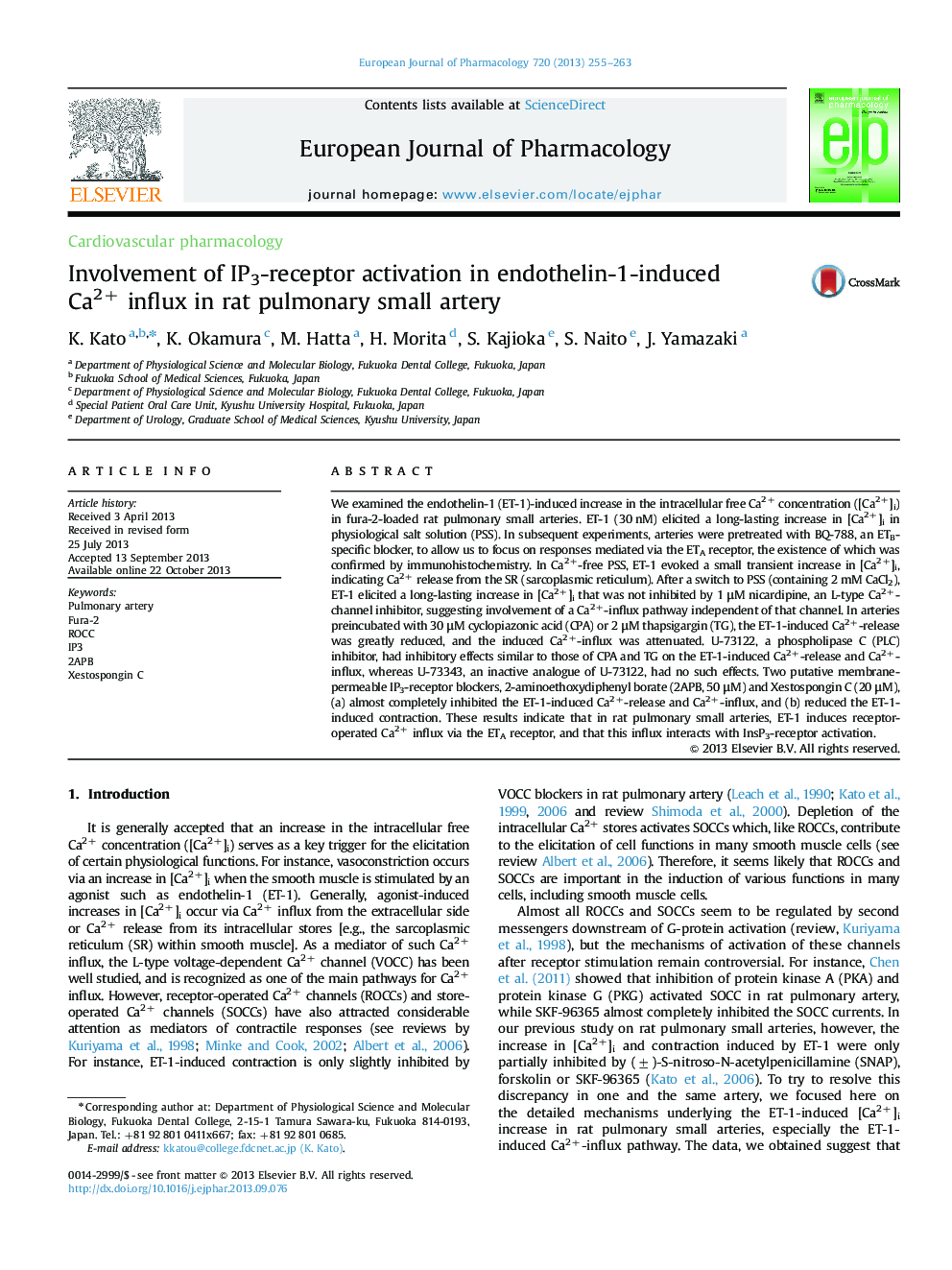| Article ID | Journal | Published Year | Pages | File Type |
|---|---|---|---|---|
| 2531919 | European Journal of Pharmacology | 2013 | 9 Pages |
We examined the endothelin-1 (ET-1)-induced increase in the intracellular free Ca2+ concentration ([Ca2+]i) in fura-2-loaded rat pulmonary small arteries. ET-1 (30 nM) elicited a long-lasting increase in [Ca2+]i in physiological salt solution (PSS). In subsequent experiments, arteries were pretreated with BQ-788, an ETB-specific blocker, to allow us to focus on responses mediated via the ETA receptor, the existence of which was confirmed by immunohistochemistry. In Ca2+-free PSS, ET-1 evoked a small transient increase in [Ca2+]i, indicating Ca2+ release from the SR (sarcoplasmic reticulum). After a switch to PSS (containing 2 mM CaCl2), ET-1 elicited a long-lasting increase in [Ca2+]i that was not inhibited by 1 μM nicardipine, an L-type Ca2+-channel inhibitor, suggesting involvement of a Ca2+-influx pathway independent of that channel. In arteries preincubated with 30 μM cyclopiazonic acid (CPA) or 2 μM thapsigargin (TG), the ET-1-induced Ca2+-release was greatly reduced, and the induced Ca2+-influx was attenuated. U-73122, a phospholipase C (PLC) inhibitor, had inhibitory effects similar to those of CPA and TG on the ET-1-induced Ca2+-release and Ca2+-influx, whereas U-73343, an inactive analogue of U-73122, had no such effects. Two putative membrane-permeable IP3-receptor blockers, 2-aminoethoxydiphenyl borate (2APB, 50 μM) and Xestospongin C (20 μM), (a) almost completely inhibited the ET-1-induced Ca2+-release and Ca2+-influx, and (b) reduced the ET-1-induced contraction. These results indicate that in rat pulmonary small arteries, ET-1 induces receptor-operated Ca2+ influx via the ETA receptor, and that this influx interacts with InsP3-receptor activation.
